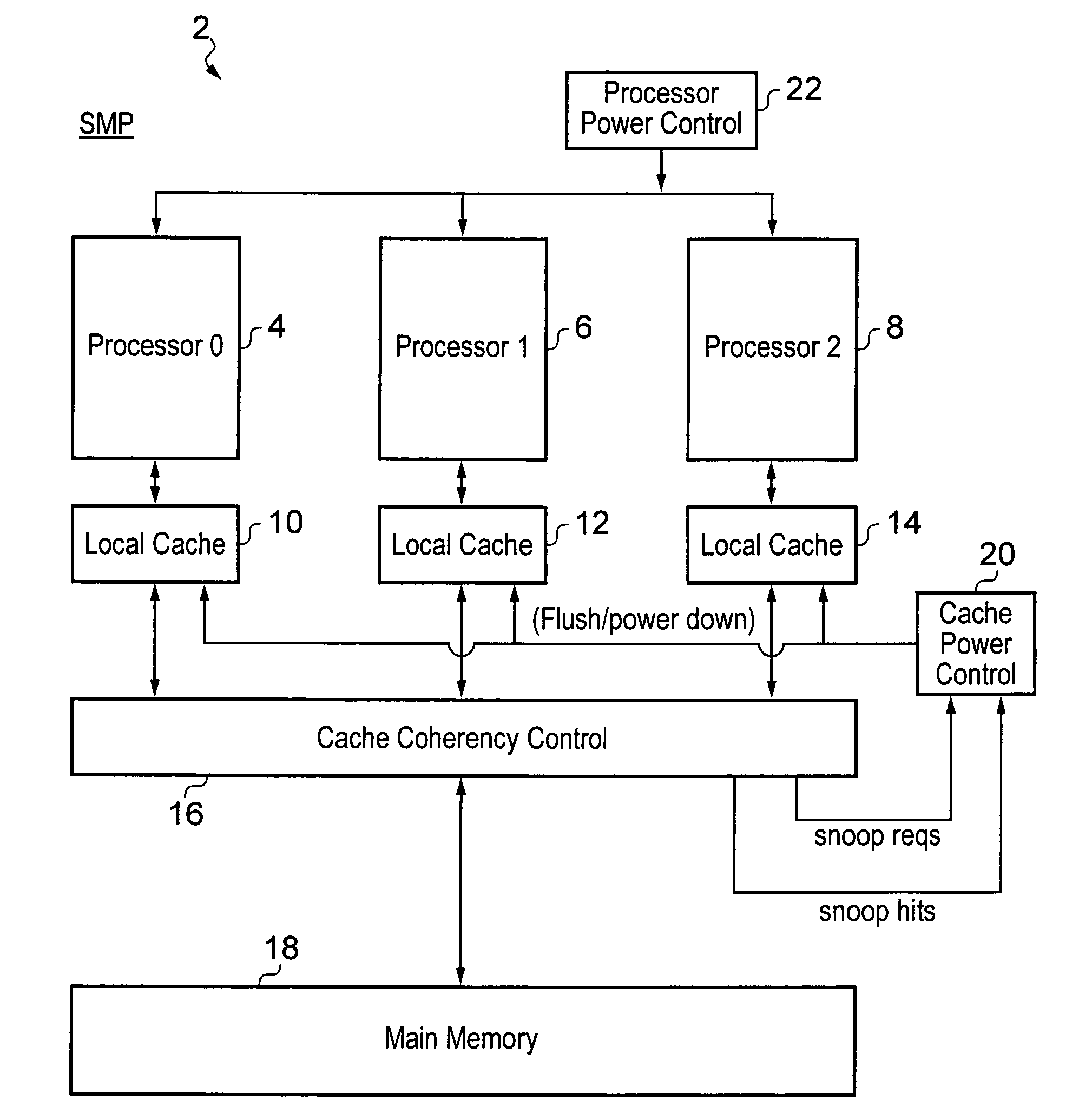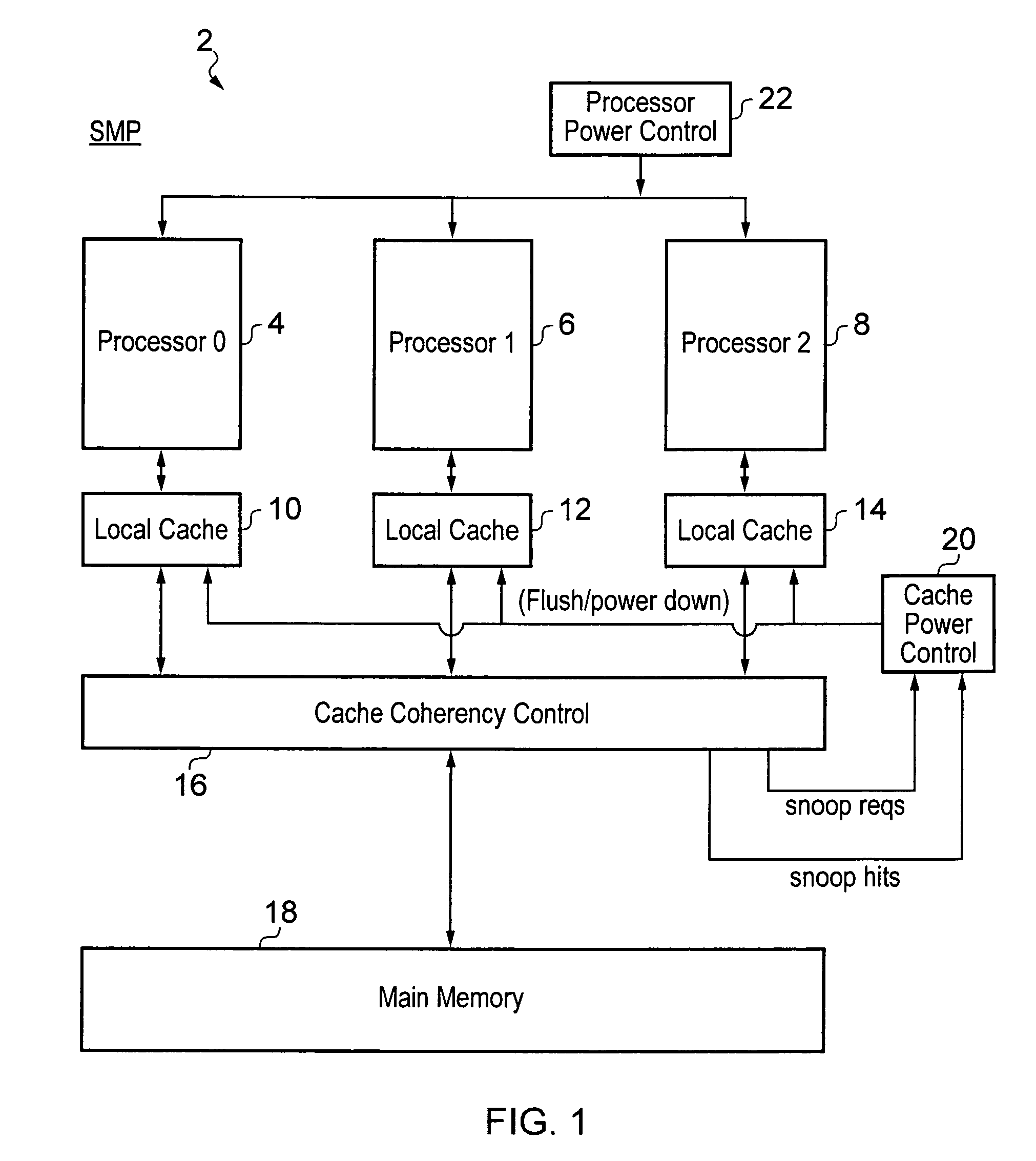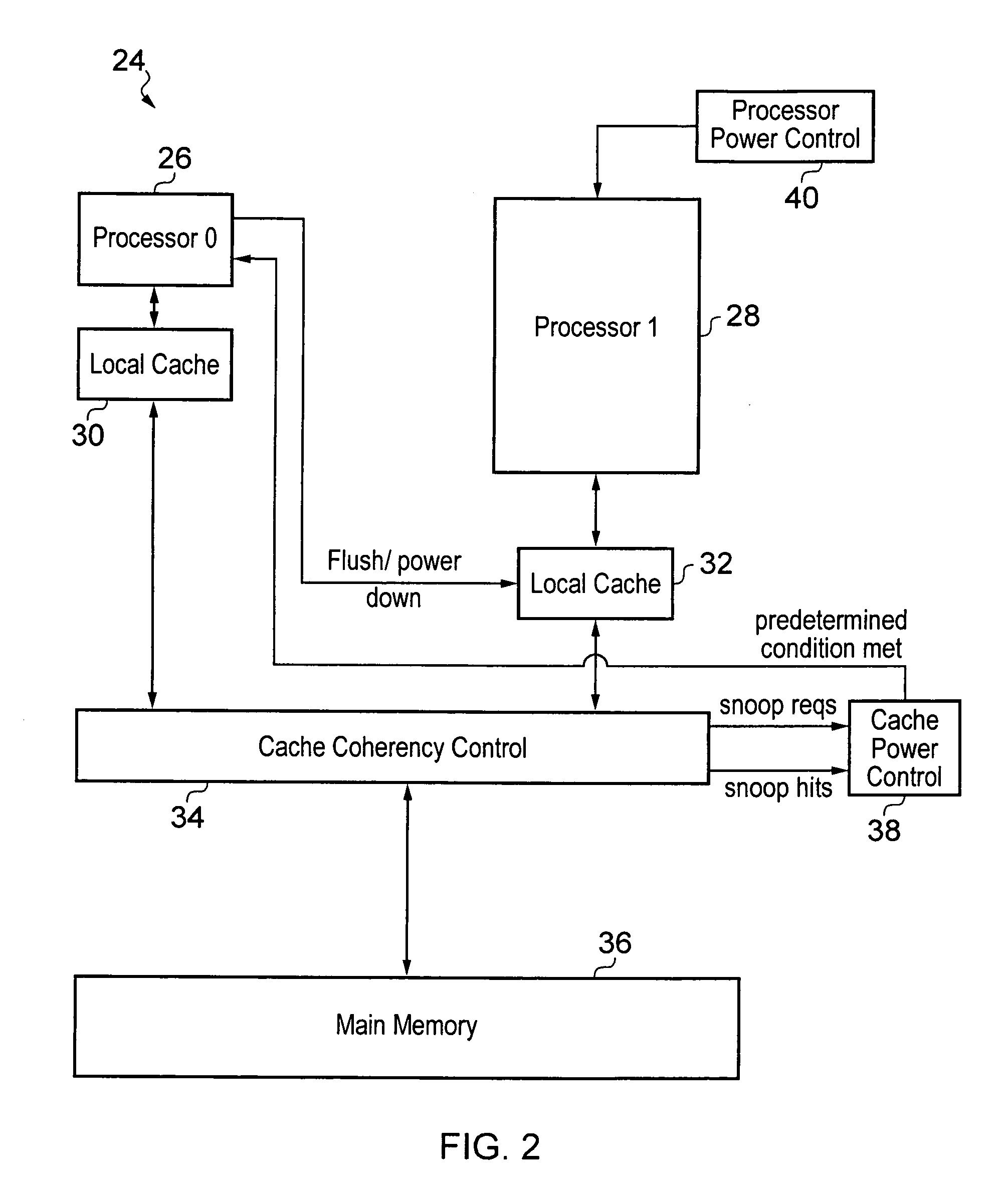Local cache power control within a multiprocessor system
a multiprocessor system and power control technology, applied in the field of data processing systems, can solve the problems of unnecessarily consuming additional power, slow and power inefficient, and consuming power, and achieve the effect of greater power saving
- Summary
- Abstract
- Description
- Claims
- Application Information
AI Technical Summary
Benefits of technology
Problems solved by technology
Method used
Image
Examples
Embodiment Construction
[0040]FIG. 1 schematically illustrates a symmetric multiprocessor system 2 comprising three processors 4, 6, 8 each having an associated local cache memory 10, 12, 14. A cache coherency controller 16 is coupled to each of the local cache memories 10, 12, 14 and is responsible for maintaining coherence between the data held within the local cache memories 10, 12, 14 with respect to each other and with respect to corresponding data within a main memory 18. The cache coherency controller 16 issues snoop requests and detects snoop hits in respect of the other local cache memories 10, 12, 14 when a cache request is made within one of the local cache memories 10, 12, 14. This snooping and cache coherency control operation in itself can have a variety of different forms as will be familiar to those in this technical field.
[0041]In addition to the normal behaviour of the cache coherency controller 16 in interacting with the local cache memories 10, 12, 14, it also provides signals indicativ...
PUM
 Login to View More
Login to View More Abstract
Description
Claims
Application Information
 Login to View More
Login to View More - R&D
- Intellectual Property
- Life Sciences
- Materials
- Tech Scout
- Unparalleled Data Quality
- Higher Quality Content
- 60% Fewer Hallucinations
Browse by: Latest US Patents, China's latest patents, Technical Efficacy Thesaurus, Application Domain, Technology Topic, Popular Technical Reports.
© 2025 PatSnap. All rights reserved.Legal|Privacy policy|Modern Slavery Act Transparency Statement|Sitemap|About US| Contact US: help@patsnap.com



